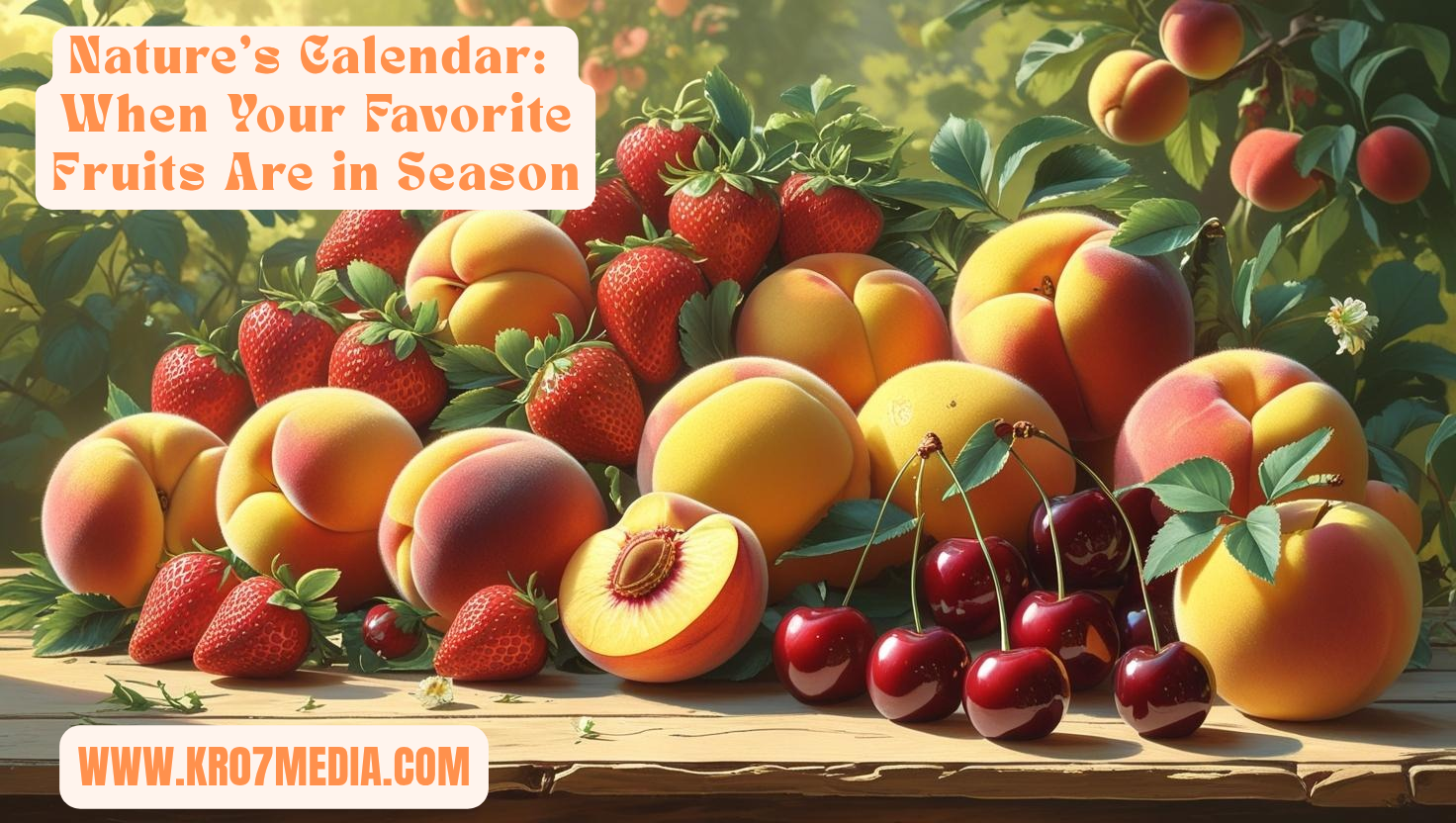In today’s world of year-round grocery store abundance, it’s easy to forget that fruits—those sweet, juicy staples of our diet—are deeply rooted in a natural rhythm. Long before global trade and refrigeration allowed us to eat strawberries in December or apples in June, people lived in harmony with nature’s calendar, relishing the anticipation of each season’s fruit as it ripened. Eating fruit in season not only ensures the best flavor and nutritional value but also supports local agriculture and reduces environmental impact.
Let’s take a journey through the seasons to understand when your favorite fruits are naturally in season, how to spot them at their peak, and why honoring the natural calendar of fruit can make our diets more delicious and sustainable.
Spring (March–May): The Awakening of Sweetness
As winter’s chill fades, the earth begins to stir. Spring marks the return of color, with fruit trees blooming and the first fruits of the year making a shy but welcome appearance.
🍓 Strawberries
One of spring’s brightest stars, strawberries begin appearing in late spring. These sweet red jewels are best between April and June in most temperate regions. Their flavor is unparalleled when picked fresh and locally grown.
🍒 Cherries
Cherries begin ripening toward the end of spring and into early summer. Late May through early July is prime time, depending on your location. Whether tart or sweet, they’re best enjoyed fresh, as they have a short shelf life.
🥝 Kiwi
In regions like California and New Zealand, kiwi becomes available by late spring, bringing its tangy-sweet burst of flavor. While often shipped globally, the taste is noticeably richer when consumed close to the harvest.
Summer (June–August): A Fruity Paradise
Summer is the undisputed champion of fruit abundance. With long sunny days and warm temperatures, fruits reach their full sweetness and variety.
🍑 Peaches, Nectarines, and Plums
The “stone fruit” family dominates summer markets. June to August is prime time for these juicy, aromatic fruits. A ripe peach at its peak is one of nature’s finest gifts.
🍉 Watermelon and Melons
Nothing says summer like a slice of watermelon. July and August are peak months for watermelon, cantaloupe, and honeydew. High in water and sugar, they are perfect hydrating snacks during hot days.
🍇 Grapes
Though available year-round, grapes harvested in late summer to early fall have a better balance of sugar and acidity. Look for local harvests starting in August.
Autumn (September–November): The Season of Harvest and Depth
As the days cool, fruit flavors grow deeper and more robust. Autumn is a time for rich, earthy sweetness.
🍎 Apples
One of the most iconic fall fruits, apples are harvested from late August through October. With thousands of varieties, from crisp tart Granny Smiths to sweet Fujis, apples are versatile and long-lasting.
🍐 Pears
Pears ripen from September to November, and their texture and sweetness improve after picking. Let them ripen at room temperature for optimal flavor.
🍇 Figs
Figs have two seasons, but the second and main harvest is in late summer to early fall. Their honeyed flesh pairs beautifully with both sweet and savory dishes.
Winter (December–February): Citrus and Resilience
Though winter seems a quiet time for fruits, it’s when citrus shines bright, bringing a much-needed splash of sunshine to cold months.
🍊 Oranges, Mandarins, and Tangerines
Winter is peak citrus season, especially in warmer climates like Florida and California. December through March is the best time to enjoy oranges, clementines, and tangelos.
🍋 Lemons and Limes
These citrus staples are available year-round, but their flavor peaks in winter and early spring, making them great for adding zest and brightness to seasonal dishes.
🍌 Bananas
While bananas don’t follow a traditional seasonal pattern due to their tropical origins, in regions like India and parts of Africa and Central America, natural harvest cycles can influence their peak flavor periods, generally aligning with local rainy seasons.
Why Eating Seasonal Fruits Matters
1. Better Taste and Nutrition
Fruits allowed to ripen naturally before harvest are richer in flavor and higher in nutrients. Imported or out-of-season fruits are often picked early and ripened artificially, which compromises both taste and value.
2. Supports Local Farmers
Eating in season often means eating local. Supporting nearby growers helps preserve regional farming economies and ensures freshness.
3. Reduces Environmental Impact
Transporting out-of-season fruits across the globe consumes energy and contributes to greenhouse gas emissions. Seasonal, local fruit travels less and requires fewer preservatives.
4. Cost-Effective
When fruits are in season, they are usually in abundance—and therefore cheaper. Off-season fruits, on the other hand, come at a premium due to storage and transport costs.
Tips for Following Nature’s Calendar
Visit farmers’ markets: They often sell only seasonal produce, which makes them great places to learn what’s fresh.
Use seasonal produce guides: Many regions offer charts that show when fruits (and vegetables) are in season locally.
Preserve the bounty: Canning, drying, or freezing seasonal fruits lets you enjoy them year-round without relying on imports.
Conclusion: Syncing with Nature’s Rhythm
In our rush for convenience, we often overlook the joy of seasonal anticipation—the thrill of the first strawberry after winter or the crisp bite of a fall apple. By tuning into nature’s calendar, we rediscover a deeper connection with the earth and a more flavorful, healthful way of eating.
So the next time you crave fruit, pause and ask: Is it in season where I am? If the answer is yes, relish it—it won’t last forever. And that’s the beauty of it.
Seasonal eating isn’t a trend—it’s a return to harmony with the natural world, one delicious bite at a time.



